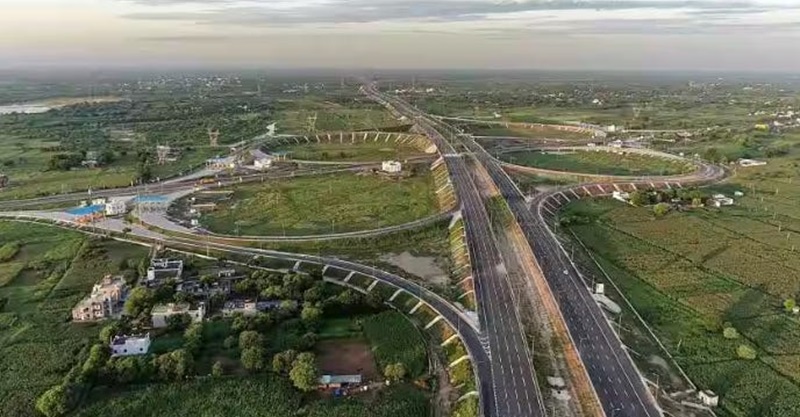The Future of Connectivity: A Roadmap for Business Transformation and Digital Innovation

Samyuktha Surendran, Senior Vice President at Airtel Business
The pace of Digital Transformation has undergone a sea change, hinging today on incorporating AI to improve outcomes and drive cost optimizations across business functions. The average expenditure on digital tools has increased exponentially across the globe, also highlighting the role of technology platforms to drive this change.
As the proliferation of digital technologies accelerates, companies must change their operations accordingly to stay ahead of the curve and stand their ground in this competitive ecosystem.
As 2024 gets underway, enterprises face a similar set of technological and economic challenges that complicated the previous year. Cost optimization and improvement in business outcomes will remain priorities of most CXOs. The digital transformation initiatives they spearhead will reflect these priorities.
What are the trends in the transformation landscape today?
Traditionally digitization has been viewed as a lever to increase revenue and bring about business growth. However as there are talks of recession across the globe, cost optimization becomes a key priority to CXOs. We are also witnessing this transformation is no longer driven by the CIO’s office and is business led with active focus on improvement of business outcomes. The transformation is led by business with IT playing a supporting role. Also as the technology landscape matures, we are witnessing more niche industry offerings and a push towards standardization. This in turn also has an impact on crunching timelines and can make deployment efforts shorter. Standardization also leads to a faster pace of innovation and newer technology adoption.
Covid gave a huge fillip to cloud based initiatives and we saw organizations seek out SAAS based applications and services across sectors. We saw organizations shift to a model of consumption based utilization, thereby minimizing underutilized resources across the technology stack. Pay-as-you-go is becoming the norm in the technology industry, with various SAAS, PAAS, IAAS and NAAS options putting to rest old models of large investments in hardware and software.
Another trend we are witnessing is process automation – to eliminate repetitive processes. As automation embraces AI deeply, we will see a wider range of process automation in the industry, thereby giving rise to more cost-saving opportunities than siloed task-based automations.
Timelines are getting leaner and there is a necessity to produce concrete results quicker now, than was the norm in the past. We are seeing long larger initiatives make way for quick, small, wins. Agile methodologies are gaining wider usage as these can produce quicker wins as opposed to large investments before results can be seen. This also enables the organization to quickly adjust to new trends along the way.
Outside Technology what can determine the success of Digital Transformation Initiatives?
A critical aspect of the success of a transformation initiative is the change management process, which is gradually getting the respect it deserves. Technology adoption cycles used to be a linear process of developing solutions and then presenting the solution to the end user. This process often resulted in low adoption rates and ultimately low business value. This again posed adoption challenges leading to failures.
Companies must ensure the commitment of two groups of people if they want to change projects to be successful - the most influential C-Suite executives and the people who must use the new technologies and adapt to new ways of working. C-Suite commitment to drive change is vital to how the organization perceives it and their willingness and adaptability to change and thereby success.
Assessing your current status is imperative to creating a thorough digital transformation blueprint that clears your path of all obstacles. Understanding status-quo helps stakeholders identify and seize opportunities that will determine the success of the initiative.
What are the technology trends seen in India today?
In India, the advent of 5G brings with it huge improvements in latency and data transfer speeds, ushering in new business use cases across sectors. Today we are witnessing huge strides in the Manufacturing sector as entire factories become Private 5g enabled. This has paved the way for better end-to-end automation, driving down costs and increasing productivity.
The faster transmission times and higher bandwidth that 5g will usher in, will in turn accelerate the adoption of AI, IoT and other emerging technologies on the cloud because they require large volumes of data and super-fast processing times. Customers can have control over the data and can ensure the safety of sensitive and proprietary information. The power of 5G frees up enterprises to increase flexibility and capture value from data, while at the same time improving efficiency and sustainability.
Today, we are also witnessing large government initiatives such as the smart city initiative, the smart meter initiative which could transform the way we consume energy, NHAI’s plans to use GPS-based technology in the roadways sector, the focus on ESG compliance for organizations etc. which have the capability to transform sectors. With the government also driving data residency and data privacy we are witnessing Enterprises make large investments in the country to upgrade their technical capabilities.
The faster transmission times and higher bandwidth that 5g will usher in, will in turn accelerate the adoption of AI, IoT and other emerging technologies on the cloud because they require large volumes of data and faster processing times.
The Roadmap behind Every Success Story
Digital transformation is business transformation, but the journey towards digitization is a fundamental change that requires organizations to restructure their infrastructure from its core. Embracing enterprise-wide change and innovation that redefines business architecture and operational infrastructure is simultaneously riveting and marked with uncertainties. The right digital transformation roadmap is the key to ensuring organizational strategies remain on track— and crafting and deploying a well-curated roadmap builds a creative, sustainable, and collaborative business culture.
Most enterprises have adopted a digital-driven strategy for constant enhancement and competitive advantage. A digital roadmap not only yields growing results but also drives execution and empowerment. This journey is a tale of aligned leadership, business experience and expertise, and the willingness to welcome disruptive technologies.
The journey into industry
Samyuktha Surendran has played many leadership roles in the Technology and Telecom Industries. She currently serves as Senior Vice President at Airtel Business. In her current role she oversees scaling up the business as well as identifying new market opportunities and conceptualising new product development. Prior to this she was a Director at Oracle(India).
She also currently serves on the Boards of several companies in the Infrastructure sector – among them Larson and Toubro IDPL's SPVs. She also serves as Independent Director on the Board of Interise Investment Managers, one of India's largest Indvit's in the infrastructure sector. She is also passionate about fostering diversity within organisations.
She is an alumnus of the College of Engineering, Guindy and the Indian Institute of Management, Ahmedabad.








